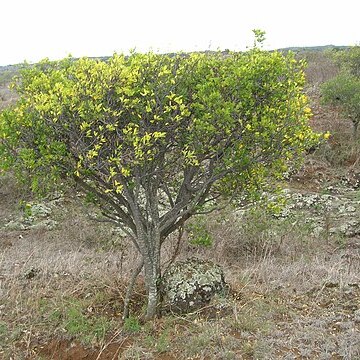Shrubs or subshrubs, occasionally small trees or rarely a herbaceous perennial (W. linoides), evergreen or deciduous. Leaves opposite or alternate. Inflorescence usually terminal and subterminal, rarely axillary, fascicled or solitary, spicate, racemose, umbelliform or capitate, sometimes in compound terminal panicles, often without involucre; peduncle long or short. Flowers bisexual or unisexual (Hawaii), 4-or 5-merous, subsessile or distinctly pedicellate; pedicel articulate. Calyx tube yellow or green, less often purplish, red or white, cylindric or tubular, sometimes slightly funnel-shaped, often caducous after anthesis, sometimes persistent; lobes 4 or 5, spreading. Petaloid appendages absent. Stamens twice as many as calyx lobes, in two series; filaments very short; anthers oblong, upper sometimes slightly exserted; connectives indistinct. Disk with 2 or 4, very rarely 1 or 5, scales, rarely joined at base by very narrow annulus, membranous. Ovary sessile, rarely shortly stipitate, usually ellipsoid, glabrous or hairy at apex, 1-loculed; style terminal, short, distinct or obscure; stigma large, capitate, globose, or discoid. Fruit a succulent berry or rather dry. Endosperm scanty or absent; cotyledons fleshy.
Undershrubs to trees. Leaves opposite or sometimes alternate. Bracts often absent. Flowers terminal or axillary, subsessile or distinctly pedicellate. Hypanthium ± cylindrical, deciduous or rarely persistent and enclosing fruit. Sepals 4 or sometimes 5, imbricate. Corolla lobes absent. Stamens twice as many as sepals, in 2 distinct whorls, all included or the upper whorl semi-exserted. Disc cup-shaped or lobed or divided into segments. Ovary 1-locular; style terminal, short, included; stigma large. Fruit a succulent or membranous drupe.

